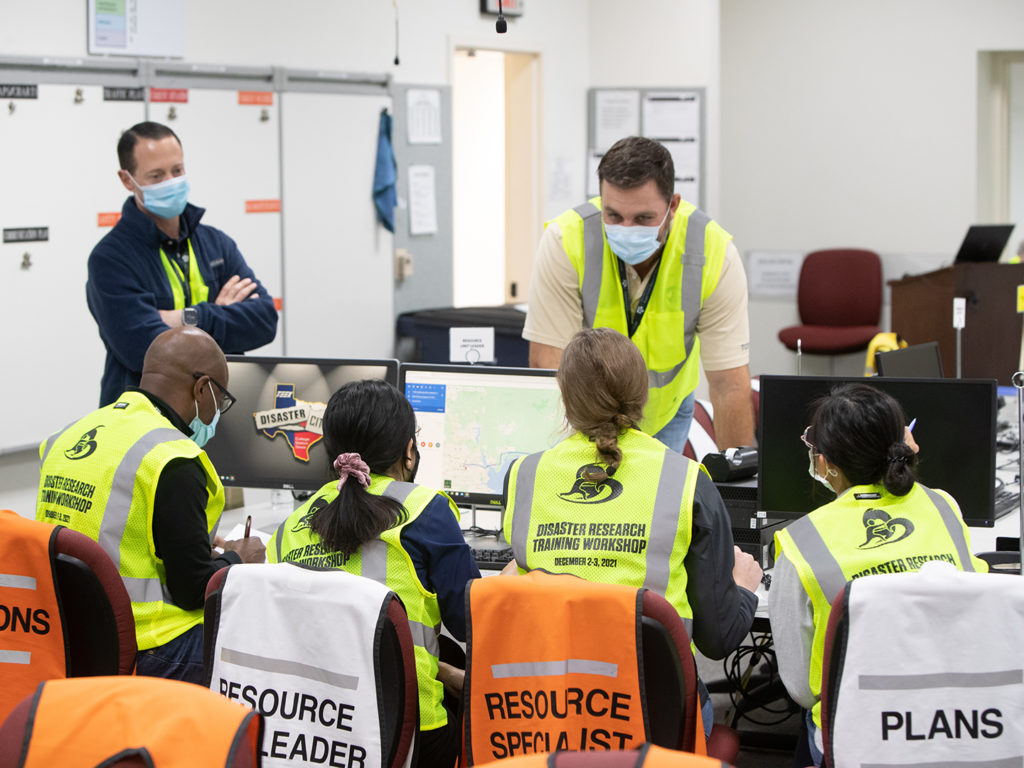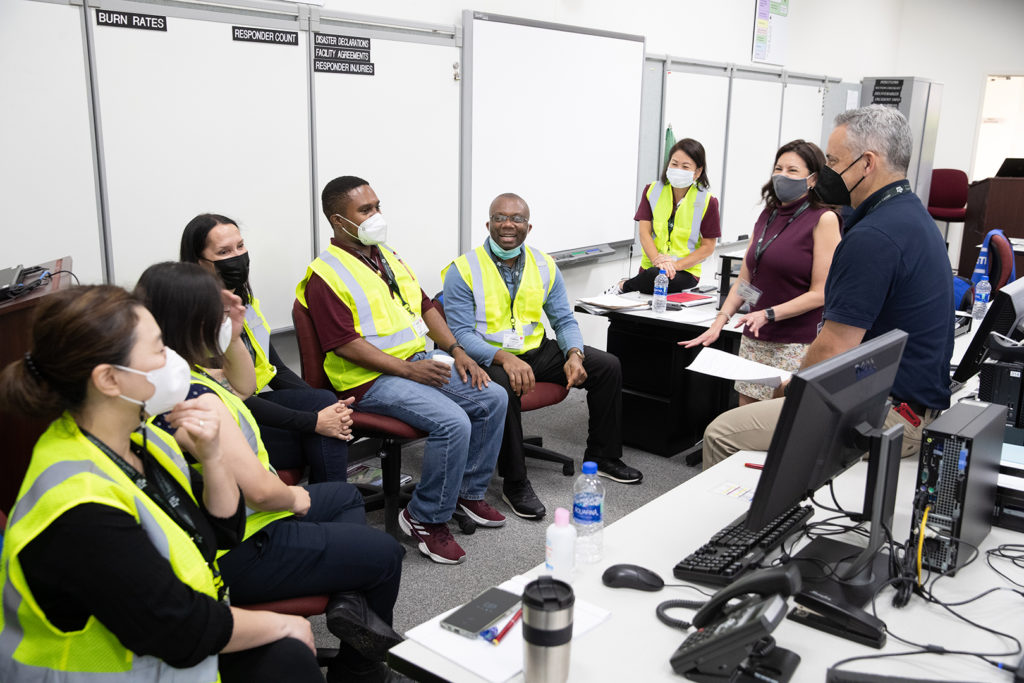Texas A&M Superfund Center Trains Environmental Scientists, Practitioners In Disaster Research Response
Story by Aubrey Bloom, CVMBS Communications

Forty environmental health scientists from around the country gathered at Texas A&M University to hone the skills necessary to understand and respond to complex natural and man-made disasters during Texas A&M Superfund Research Center’s 2021 Disaster Research Training Workshop, Dec. 2-3.
Twenty-one trainees represented Texas A&M entities, including the College of Veterinary Medicine & Biomedical Sciences, (CVMBS) the School of Public Health, and the College of Architecture.
The other attendees represented a wide array of stakeholders in disaster research response. These included academia: Northeastern University, the Baylor College of Medicine, the University of Rhode Island, the University of Michigan, and the Uniformed Services University of the Health Sciences. There were also representatives from a number of government entities including the Texas A&M Division of Emergency Management and Texas Commission on Environmental Quality, as well as private energy sector companies such as Chevron and ExxonMobil.
A total of 15 experts served as presenters to teach a number of disaster and other emergency topics as well as serve as field exercise supervisors during the two-day training at the Texas A&M Engineering Extension Service’s (TEEX) Emergency Operations Training Center. These were from Texas A&M Engineering Extension Service (TEEX), Texas General Land Office, Texas Commission on Environmental Quality, Texas A&M University School of Public Health and College of Veterinary Medicine and Biomedical Sciences, the University of Texas Medical Branch, and the United States Coast Guard.
“It is amazing that such a large group of trainees and experts were able to gather for this exciting and engaging event,” said Professor Ivan Rusyn, the Director of Texas A&M Superfund Research Center. “All attendees were happy to be part of this event that marks resumption of large-scale, in-person training activities for the individuals who were both local and those that traveled from all corners of the United States.”

Training sessions included an overview of the National Incident Command System and how a research response fits into an overall disaster response, how to effectively communicate health and safety information to the public through the media, what the safety considerations are for conducting field research, how to collect human observational data, and how to conduct field sampling for determining exposures.
On the second day, the attendees spent a half-day applying their new knowledge and skills in a series of table-top and field exercise activities based on real disaster scenarios that have occurred in the aftermath of hurricanes along the Texas coast. These scenarios included gathering field samples, planning a disaster response while interacting with first responders and government agencies, collecting data from human subjects, and communicating their activities with the general public.
“This training was very informative, especially the hands-on parts of the workshop,” said Alina Roman-Hubers, a fourth-year trainee in the Interdisciplinary Faculty of Toxicology and Texas A&M Superfund Research Center. “The combination of the didactic and practical learning is the best way to ensure that the skills we have learned can be applied in my future professional life.”
This workshop is part of the Texas A&M Superfund Research Center’s mission to educate and translate research findings to improve response by environmental scientists to complex disaster-related health impacts.
The Center was established in 2017 to design, develop, and implement comprehensive tools and models for addressing exposure to mixtures during environmental emergency-related contamination events and has since responded to multiple events that have helped inform the workshop.
See more photos from the 2021 Disaster Research Training Workshop on the CVMBS Flickr account.
###
For more information about the Texas A&M College of Veterinary Medicine & Biomedical Sciences, please visit our website at vetmed.tamu.edu or join us on Facebook, Instagram, and Twitter.
Contact Information: Jennifer Gauntt, Director of VMBS Communications, Texas A&M College of Veterinary Medicine & Biomedical Sciences, jgauntt@cvm.tamu.edu, 979-862-4216


